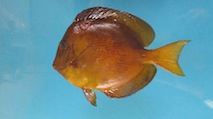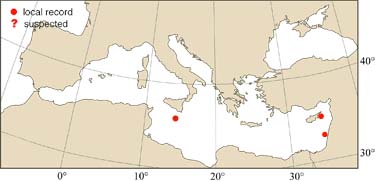 |
Relevant synonyms
Misidentification
Meristic formula
|
|
| photo: D.Golani |
|
SHORT
DESCRIPTION
color :
Young specimens yellow with blue edge on dorsal, anal and caudal fins and blue ring around the eye. Adults turn yellowish-brown and in the terminal stage they are blue. size : 8-25 cm (max 39 cm) |
DISTINGUISHING CHARACTERISTICS
BIOLOGY / ECOLOGY
|
|
1st
MEDITERRANEAN RECORD
|
 |
|
DISTRIBUTION
Mediterranean : Israel, Cyprus and Malta |
ESTABLISHMENT SUCCESS
|
|
|
MODE OF
INTRODUCTION |
IMPORTANCE TO
HUMANS |
|
KEY
REFERENCES
|